If there hadn’t been a light dusting of snow, I might have missed it. Lying in the middle of the trail was a distinct object. I always have my eyes out for tracks, signs and cool objects when I hike. I immediately saw the lump in the trail wasn’t a rock or stick.
As I bent down, I could see it was a horn. A pronghorn’s horn.
I was hiking in the Boise foothills near my Idaho home, with an eye out for wildlife. In the early spring, I often find the antlers shed by mule deer bucks. This was the first time I found a shed horn.
I know what you’re thinking: Members of the deer family grow antlers and shed them annually. Mammals with horns do not shed them, and the horns continue to grow throughout the animal’s life.
This is true for all horned mammals. Kudus and bighorn sheep, bison and domestic cows, mountain goats and impalas. None of them shed horns.
There is, however, one exception: the pronghorn.
The pronghorn has horns, not antlers. And it sheds them annually.
Let’s take a look at the extraordinary life of pronghorns, the only animal that sheds its horns.
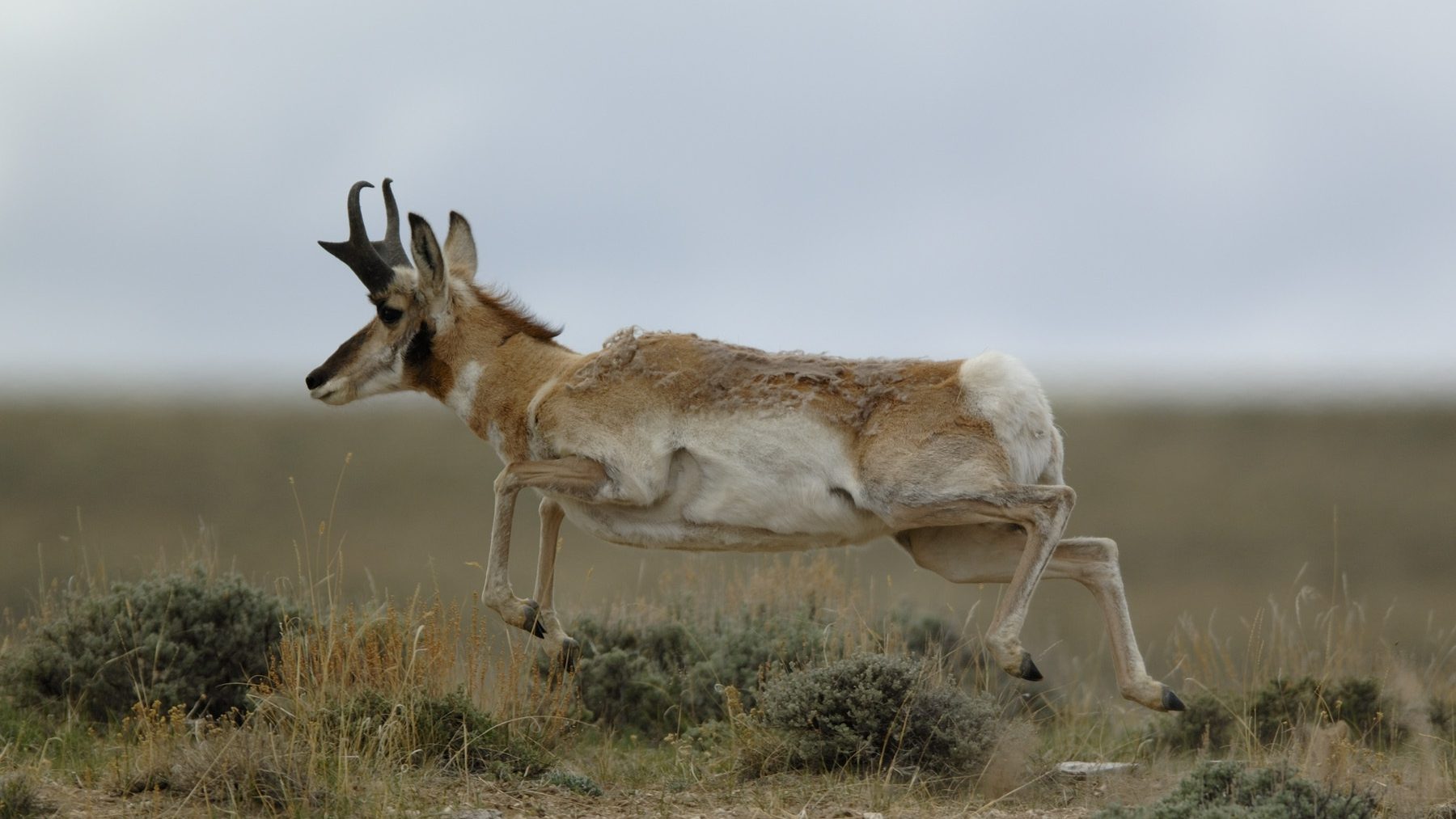
Meet the Pronghorn
Many people refer to pronghorns as “antelope” but they’re not. The pronghorn, in fact, is the sole surviving member of the mammalian family Antilocapridae. (By contrast, the Bovidae family, that includes antelopes, consists of at least 143 species).
Pronghorns are found widely in the open habitats of western North America. The plains regions of Wyoming and Montana, as well as the Great Basin, are strongholds. But they can be seen in many grassland and arid areas from the Dakotas to California, from Canadian prairie to Baja.
The confusion with African antelopes is understandable. The pronghorn has a similar look to springbok and gazelles that live in large herds in open areas of Africa. And the similarities don’t end with looks. The gazelle lives on open plains and is built for short bursts of speed to escape the predators familiar to any viewer of nature documentaries: cheetahs, lions, wild dogs.
The pronghorn is adapted to evade similar predators. It’s the fastest animal in North America, evolved to outrun cheetahs. Wait. Cheetahs in North America? Well, not anymore. But during the Pleistocene, cheetahs thrived here, as did many other fast-running predators including long-legged hyenas.
Those predators went extinct in North America around 12,000 years ago, along with the mammoths and giant ground sloths. The pronghorn remains, offering the curious naturalist a look at Pleistocene fauna. It is a fast prey animal that no longer faces fast predators.
For those who want to take a deep dive into pronghorn evolution and ecology, I highly recommend two highly enjoyable books by researcher John A. Byers, American Pronghorn and Built for Speed.
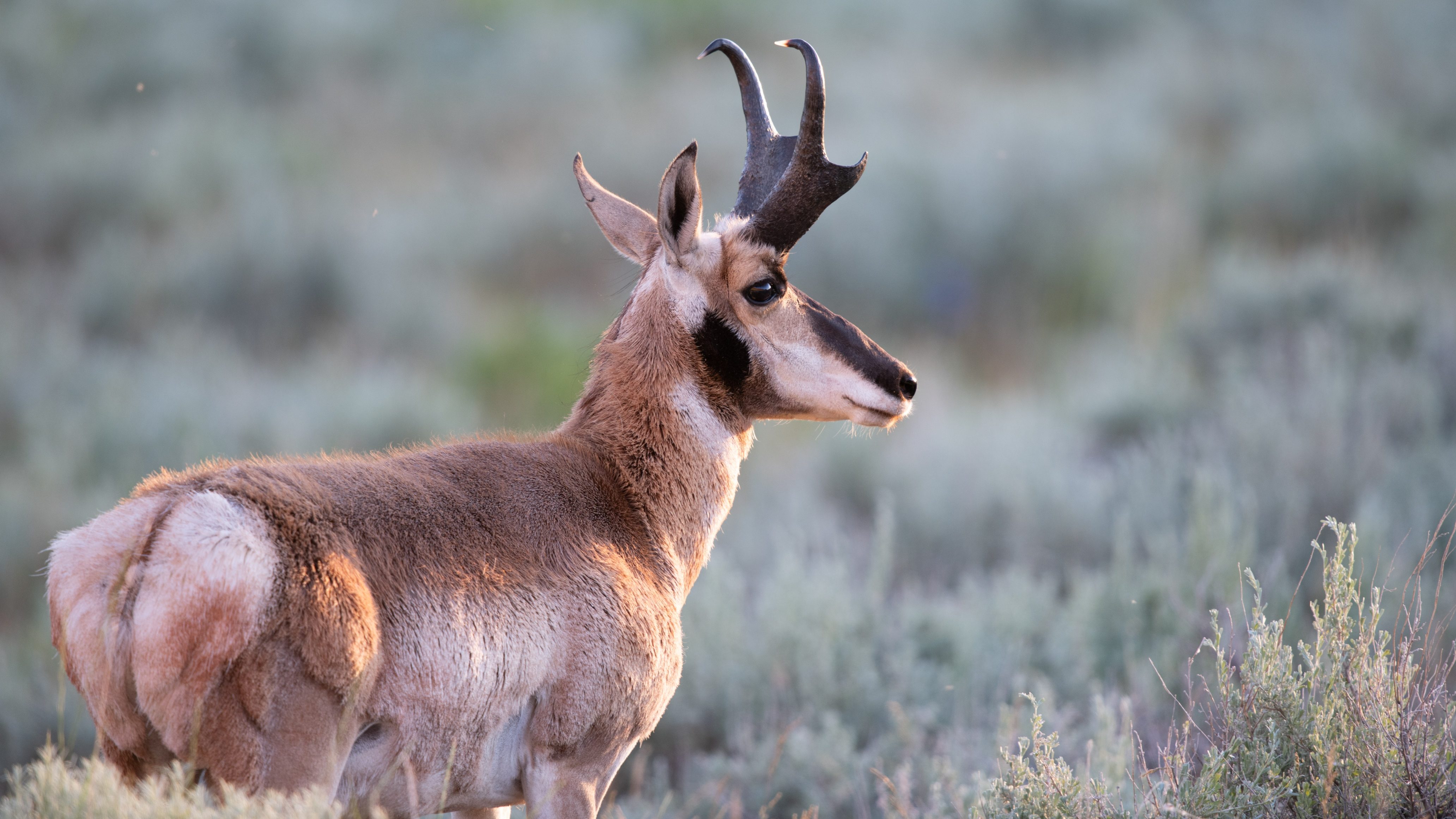
Horns and Antlers
Among hunters and others, many use the terms “antlers” and “horns” interchangeably. Just as a pronghorn is not an antelope, an antler is definitely not a horn.
As Byers notes in American Pronghorn, both horns and antlers are primarily used as fighting tools by males to establish dominance. Both structures have benefits and costs associated with them.
Horns are keratinous sheaths that grow over a bony core that in turn grows out of the skull. Horns are lightweight and continue growing throughout the animal’s life. They are not shed. Byers notes that there are disadvantages, including heat loss in winter and the inability to repair a horn once damaged.
Antlers are bony structures that are shed annually. As such, damage to antlers doesn’t matter as much: deer just regrow them the next year. And they also don’t have the heat loss associated with them. However, growing antlers every year requires substantial energy cost and, as Byers writes, “a large mobilization of calcium, phosphorous and protein.”
The pronghorn is unique; it grows and sheds horns annually. Byers believe pronghorn horns “represent an ideal compromise that minimizes the cost of transport, avoids mineralization and protein cost, and and allows for seasonal repair.”
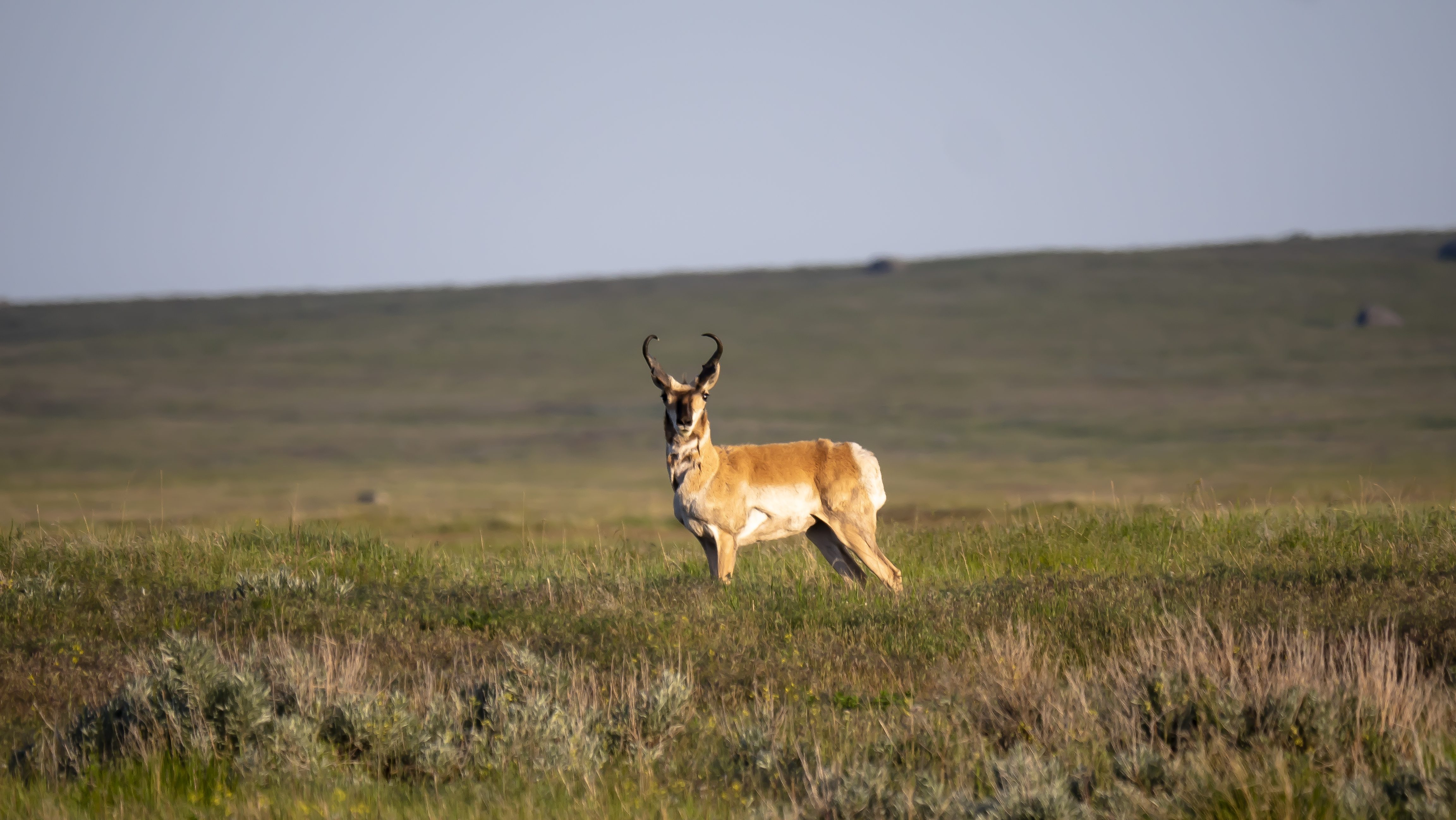
The pronghorn’s horns are typically “pronged” – as its name applies – with curving tips. They do not grow as large as some horned beasts, but I nevertheless find them impressive, all the more so for their uniqueness.
Perhaps given their unusual nature, it’s not surprising that pronghorn horns have given rise to myths. The main one is that pronghorn horns are actually just condensed hair. The pronghorn’s horn is a keratinous sheath, as is the case with other horned animals. Outdoor writer Justin Brewer offers this explanation for why the myth of “hair horns” persists: “At the base, hair will often grow into the horn (the sheath) as it hardens. This leaves the impression that the sheath is itself composed of hair.”
Pornghorns typically shed their horns in late November or December, earlier than deer and elk in the same habitats shed their antlers. Although this varies widely, mule deer and elk near my Idaho home typically begin shedding antlers in late January, and some keep their antlers well into spring.
Byers suggests that the early shedding may have an additional advantage for the social pronghorn. The rut is brutal for males. Following the rut, a pronghorn male without horns is “able to join and be fairly inconspicuous in a mixed-sex herd.” The male can then take advantage of herd life, including better protection from predators.
Finding shed antlers in North America has become a popular springtime hobby. With a little practice, antlers can be readily found in many habitats. I have yet to meet anyone who purposefully searches for pronghorn horns. But keep your eye open in sagebrush country and other suitable habitat. The horns may blend in, but the pronghorns shed them every year. I count finding one as a nice natural history prize. I keep alert, but I have yet to find another.
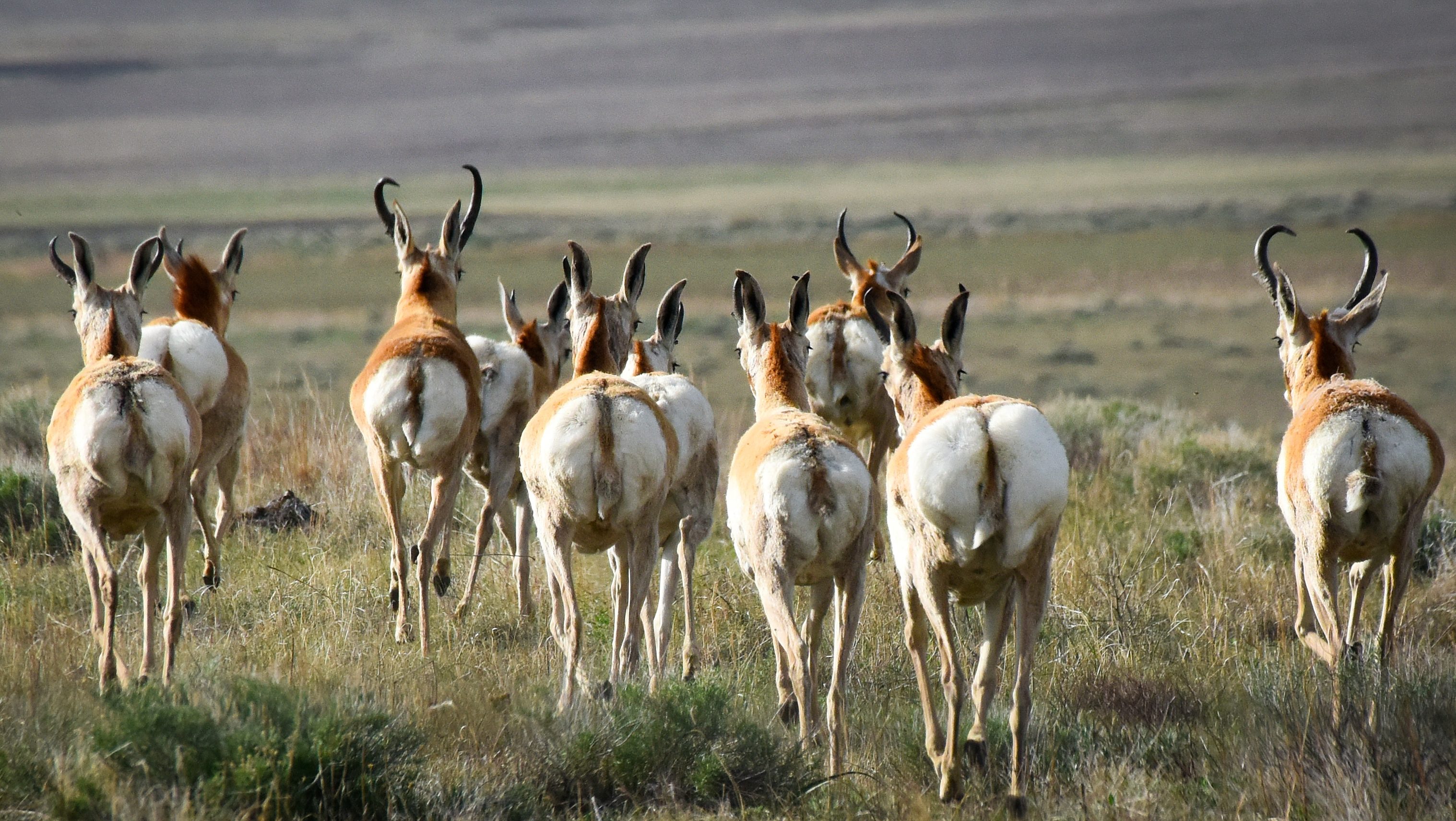
The Future of the Pronghorn
The pronghorn lost its main predators thousands of years ago, and for a while, life may have been easy. As was the case for so many wildlife species, that changed rapidly with European colonialism. Rifles posed a far greater challenge to pronghorn survival than speedy cheetahs.
Estimates of pre-colonization pronghorn populations vary, but most place it between 30 million and 50 million animals. By the early 20th century, that had shrunk to as few as 12,000 animals. Thanks to wildlife laws and protected areas, there are now an estimated 1 million pronghorn.
That’s a dramatic conservation success, but pronghorns remain a species of focus for conservation organizations, including The Nature Conservancy. Throughout their range, some populations are quite small and isolated, always a conservation risk. But even in areas where they are abundant, pronghorns can face challenges.
Recent research shows that many pronghorn populations are migratory. A study by the Lava Lake Institute for Science and Conservation and Wildlife Conservation Society documented a 160-mile migration in central Idaho, one of the longest mammal migrations recorded in North America.
Such a long route presents significant risks to pronghorns. They need connected habitats. Fences can be deadly; pronghorns are built for speed but not for jumping, so animals can be easily trapped by bared wire. Wildlife-friendly fences, such as those used at the Conservancy’s Matador Ranch in Montana, are becoming more common in migration corridors.

Habitat fragmentation is more difficult to address. In central Idaho, the pronghorns travel between the Pioneer Mountains and the lava beds of Craters of the Moon National Monument. With the exception of a few road crossings, they can make that migration essentially unimpeded by development.
That’s in no small part due to extensive public land. But the glue that holds all this together is private ranchlands, often sandwiched in the valleys between mountain ranges. In the early 2000s, The Nature Conservancy recognized the importance of these ranchlands for wide-ranging wildlife and sensitive species like sage grouse. They worked with partners and willing landowners to protect these ranchlands from development, to date protecting more than 95,000 acres.
In other parts of the western United States, pronghorn migrations can be fragmented by energy development. Where energy development is located can make a big difference for pronghorns; often their migratory corridors are quite narrow. That’s the Conservancy and partners map migration routes and work to site energy in ways that minimize impacts to wildlife.
Fortunately, pronghorns are still common animals in many national parks, public lands and ranchlands of western North America. Every glimpse at this horn-shedding non-antelope is like a window into the Pleistocene, a beast that could outrun North American cheetahs still in our midst.
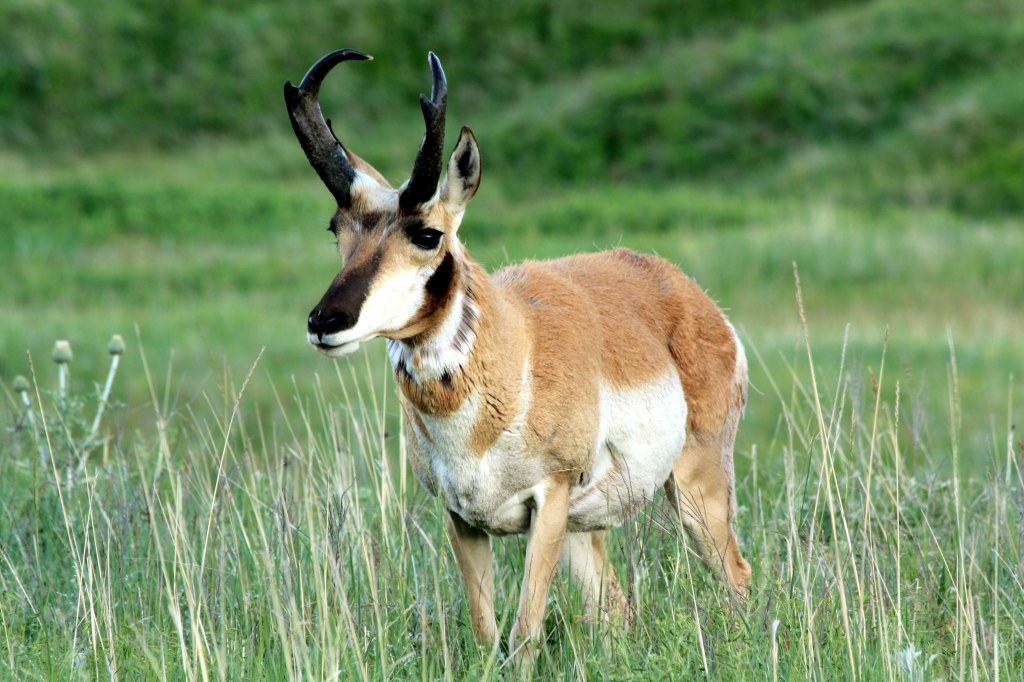



I really enjoyed this article and the natural and scientific information that I was unaware of in regard to the pronghorn.
I was on a walk at Aurora Reservoir in Colorado with my two Siberian Huskies and my boy Tibber (Tiberius) was excited about finding something?
At first I was like “drop it, drop it” not knowing what was hanging out of his mouth.
I picked it up and like you was amazed by it. The horn felt really comfortable in my hand and it just had an indescribable essence about it. I kept it to mount it to a piece of wood.
My fury kiddos still get very excited whenever they see it, actually they always smell it first.
Again – I really enjoyed your article the book references and all the factual information along with your personal story of discovery.
Sincerely,
Tyrone Beall
No idea about the difference between horns and antlers. Thanks for the illumination and for this view into the pronghorns’ lives. The growing awareness of the necessity for wildlife corridors to keep habitat connected and accessible to migratory species will hopefully benefit these beautiful Pleistocene survivors.